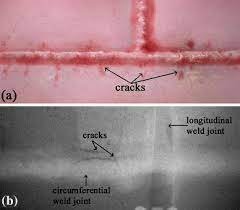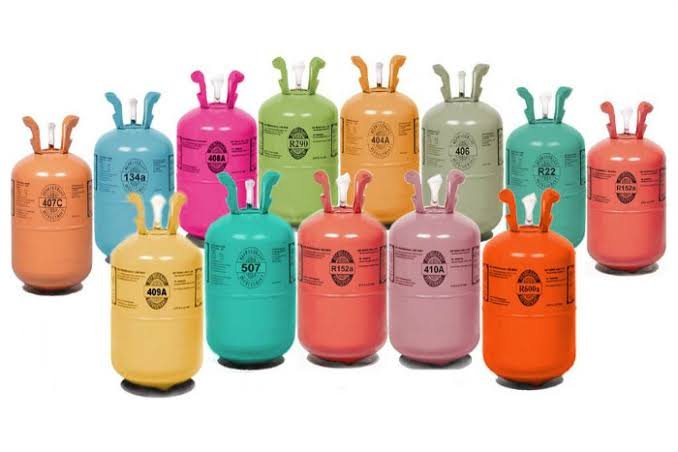
Aside from the welding hazards associated with confined spaces, there are general hazards for all welding work. Let’s take a look at some of the most common ones.
Exposure to fumes and gases
One of the most significant welding hazards is being exposed to invisible fumes and gases. These include nitrogen oxides, ozone, carbon monoxide, and nickel and chromium oxides and they can penetrate the lungs.
Depending on which fume or gas is involved and how long the person was exposed, the damage can be very severe.
It’s worth bearing in mind that there is no safe exposure minimum for fumes from welding. A person’s employer is required by law to control all exposure to welding fume effectively.
Employers have to provide RPE – respiratory protective equipment – if extra controls are needed for exposure limitation.
Problems associated with welding gases and fumes
Regular exposure or severe exposure to welding gases and fumes can cause:
- Pneumonia.
- Occupational asthma.
- Cancer.
- Metal fume fever.
- Lung and throat irritation.
Explosions and fires
Explosions and fires are two big hazards associated with hot work activities like welding. Of course, there are severe consequences. These include damage to property, serious injuries and death.
Electric shock
When arc welding, a molten metal pool is created by a live electrical circuit. So, when a person is welding, they are at risk of getting an electric shock. This is a serious welding hazard and can cause a serious injury or death. The risk of injury or death is not just from the shock itself but also from the potential risk of falling from a height.
There is also the risk of secondary electric shock too. This occurs if you touch the electrode of the welding circuit while touching the metal being worked on.
Electrical shocks are more likely:
- If you’re in damp conditions.
- If you’re wearing wet clothes.
- If you’re working on a metal floor or structure.
- If you’re in a confined space that requires lying down, kneeling or crouching.
Noise hazards
When you do welding, you can be exposed to prolonged, loud noises. A noise is considered excessive if it’s above 85 dB. Air arc gouging and flame cutting are capable of producing noises over 100 dB. At this level, they can result in a hearing impairment and ear damage.
Immediate noise exposure or regular noise exposure can cause permanent hearing loss.
This can have the following effects:
- Tinnitus (ringing in the ears).
- Vertigo (dizziness).
- Increased blood pressure.
- Increased heart rate.
Exposure to UV
Looking at the UV light when welding and not wearing welding PPE or using welding curtains can cause a painful and often long-lasting problem called ‘arc eye’.
There are lots of factors that affect flash burn injuries. These include duration, angle and distance.
With long-term exposure, it’s possible to get vision loss and cataracts.
Other eye damage caused by welding
Other eye welding hazards include:
- Gases and fumes from particulates can cause conjunctivitis.
- Foreign bodies getting into the eye like dust, sparks and grit.
Burns
One of the many severe welding hazards comes in the form of burns from molten metal, UV rays or welding arcs.
Burns can be on the eyes or skin and can be really serious. They can happen suddenly. Burns often happen when welders get distracted or skip precautions for a few welds, which is obviously bad practice.

How to control hazards and risks from welding
Welders need to follow the information given to them by their employer.
Employers have a duty by law to make sure their welders are trained. They also need to make sure that their employees and anyone close by are briefed.
Information about equipment needs to be communicated and control measures from risk assessments should be used.
Welders have a responsibility to ensure their health and safety and others’ health and safety close by.
They should:
- Follow the instruction and training that their employer provides.
- Cooperate with employers in all health and safety matters.
- Implement control measures properly as stipulated in the risk assessment.
Carry out checks before welding
There should be pre-welding checks of the equipment before it’s used to check that everything is undamaged, clean and rated correctly.
It is the employer who should provide the employee with the right information to carry out checks.
If during the checks you notice damaged insulation on electrode/torch holders, clamps, plugs or cables, you shouldn’t use the equipment.
Have regular health checks
Generally, all employees that are exposed to fumes from welding should have their health checked regularly. Health checks are essential in ensuring that problems can be detected early. It also helps employers to know when the control measures might not be sufficient.
Employees must cooperate with health checks required by their employer.
Welding safety precautions
It is essential to ensure precautions are followed for all welding activities. Employers have a legal responsibility to make sure they assess, control and monitor workplace risks. They have to make sure that risk assessments are undertaken of both the work activities and the workplace.
Make proper use of engineering controls and respiratory protective equipment (RPE)
From the Safety Alert in 2019, the Health and Safety Executive (HSE) strengthened the rules around welding fumes.
Employers now have to make sure that there are controls for welding in place, no matter how long the activity will last. General room ventilation isn’t enough to reduce exposure to fumes. When engineering controls aren’t enough, employers must provide RPE – even outdoors.
Welding PPE
Employers must provide welding PPE – personal protective equipment.
This might include:
- RPE – respiratory protective equipment.
- Helmet with a side shield. A welding helmet protects from debris, chemical burns, hot slag, particles, and UV radiation. The helmet should have the right shade of lens for the work being done. It should have good visibility and shouldn’t irritate the eyes. A helmet must always be worn, even if you’re not welding but are close to another welder. If you are within ten metres, you can still get arc eye.
- Fire-resistant clothing. This will protect from fire, radiation and heat created during welding. It will stop you from getting burns. The clothing shouldn’t have open pockets or cuffs and shouldn’t be synthetic fabric. Rather, it should be flame-resistant cotton or leather. It’s also important not to roll up trousers or sleeves as this would leave you open to sparks or molten material contacting the skin or getting into folds. Trousers should never be tucked into boots either as this means sparks could get between the trousers and the boots.
- Hearing protection. Ear defenders will protect from noise hazards. The ear defenders should be appropriate for the task and fire-resistant.
- Gloves and boots. Flame and insulated resistant gloves and steel toe-capped, rubber-soled boots should be worn to protect from heat, fire, electric shocks, falling objects and burns.



